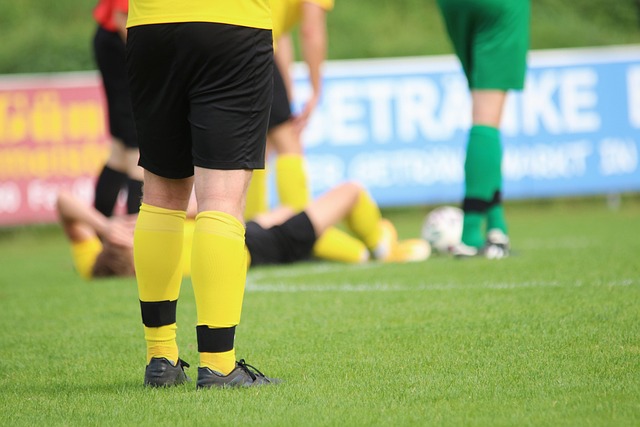Mastering Negotiation Tactics for Successful Injury Mediation

Injury mediation provides a structured dispute resolution method for physical and emotional trauma v…….
Injury mediation stands as a pivotal process within the legal sphere, offering a constructive path for resolving conflicts arising from personal injuries. This robust mechanism facilitates dialogue between parties, enabling them to reach mutually agreeable settlements without the prolonged and often costly battles of traditional litigation. As we delve into this comprehensive guide, readers will gain insights into the intricate world of injury mediation, its global impact, economic implications, technological innovations, policy frameworks, and the challenges it faces. By exploring these facets, we aim to demystify this critical process, highlighting its significance in personal injury cases worldwide.
Injury mediation is a structured negotiation process designed to resolve disputes arising from personal injuries, such as those incurred due to accidents, medical malpractice, or product liability. It involves a neutral third-party mediator who assists disputing parties in reaching an agreement without going to court. The core components include:
The roots of injury mediation can be traced back to ancient cultures where community elders served as intermediaries in resolving conflicts. However, its modern iteration emerged in the 20th century as a more formal and structured approach to dispute resolution. Over time, it has evolved and gained widespread acceptance as a cost-effective and efficient alternative to litigation. Today, injury mediation is practiced globally, with variations tailored to different legal systems and cultural contexts.
Injury mediation offers several advantages over traditional litigation:
Injury mediation has transcended geographical boundaries, finding acceptance and adoption across diverse legal systems worldwide. Its global impact is evident in several key regions:
| Region | Mediation Adoption | Notables |
|---|---|---|
| North America | High | The United States and Canada have robust mediation practices, with specialized mediators and well-established guidelines. |
| Europe | Widespread | Many European countries mandate mediation in various disputes, including personal injury cases, promoting cost-effective resolutions. |
| Asia Pacific | Growing | Countries like Australia and Japan are witnessing increased mediation rates, driven by government initiatives and cultural shifts. |
| Middle East & Africa | Emerging | Some countries in these regions are embracing mediation as an alternative dispute resolution method, adapting it to local contexts. |
The global landscape of injury mediation is characterized by unique regional trends:
Injury mediation’s global impact is also shaped by cultural considerations:
Injury mediation has emerged as a significant sector within the broader legal services market, attracting substantial investment and attention:
The economic implications of injury mediation are far-reaching:
Injury mediation plays a critical role in the functioning of economic systems:
The digital age has brought about significant technological advancements that have revolutionized injury mediation:
Technological innovations present both opportunities and challenges for injury mediation:
The effectiveness of injury mediation is significantly influenced by policies and regulations enacted by governments and legal authorities:
These policies and regulations have a profound effect on the development and practice of injury mediation:
Despite its numerous advantages, injury mediation is not without challenges:
Criticisms of injury mediation offer valuable insights for improvement:
A prominent law firm in the U.S. faced a complex medical malpractice suit involving a series of errors during a patient’s treatment. Through mediation, they successfully resolved the case with a creative settlement that included financial compensation and improved hospital protocols. The mediator played a pivotal role in facilitating open communication, enabling the parties to focus on a mutually beneficial outcome rather than legal fault.
A multinational corporation faced a product liability lawsuit from a customer in Asia. Through international mediation, the dispute was resolved successfully, with the mediator facilitating negotiations between legal teams from different jurisdictions. The outcome involved a substantial settlement and enhanced global corporate responsibility initiatives.
A family-owned business was torn apart by a contentious estate dispute among siblings. Mediation provided a safe space for open dialogue, allowing them to reach an agreement that divided assets fairly while preserving their relationship. This case highlights the power of mediation in resolving deeply personal and emotional conflicts.
The future of injury mediation holds promising prospects:
Several emerging trends shape the future landscape:
To navigate the future, stakeholders should consider:
Injury mediation stands as a testament to humanity’s unwavering pursuit of peaceful conflict resolution, offering a beacon of hope in an era marked by escalating legal disputes. As we have explored, its global impact is profound, shaping legal landscapes, transforming economic systems, and fostering positive social change. From North America to the Middle East, this process has proven its worth, providing a constructive alternative to costly litigation.
By embracing technological advancements, adapting to cultural nuances, and navigating challenges head-on, injury mediation continues to evolve, ensuring its relevance in an ever-changing world. As we look ahead, the future holds immense potential for this powerful dispute resolution method, promising to bring about more positive outcomes, foster understanding, and preserve relationships across borders and cultures.
Q1: What is the main difference between mediation and litigation?
A: Mediation is a voluntary process where a neutral third-party mediator assists disputing parties in reaching an agreement. Litigation, on the other hand, is a mandatory legal process where a judge or jury decides the outcome of a dispute. Mediation emphasizes cooperation, while litigation can be more adversarial.
Q2: How does mediation work in international disputes?
A: International mediation involves specialized mediators with cross-cultural understanding and legal expertise. It requires collaboration between legal systems and potentially different languages. Mediators create a safe, neutral environment for parties to negotiate, often utilizing technology to overcome geographical barriers.
Q3: Can mediation be binding?
A: Yes, mediation can result in binding agreements, especially when parties sign a mediation agreement committing to the process and its outcome. However, not all mediations lead to legally enforceable settlements, as some may focus on resolving disputes through understanding and goodwill.
Q4: Is mediation always the best option for personal injury cases?
A: Mediation is an excellent option for many personal injury cases, offering cost savings, swift resolutions, and a chance for parties to maintain control over the outcome. However, complex cases with multiple liable parties or where legal remedies are paramount may be better suited for traditional litigation.
Q5: How can I find a qualified mediator?
A: Reputable mediation organizations maintain databases of qualified mediators. Look for mediators with relevant training, experience in your type of dispute, and a proven track record of successful resolutions. Check reviews and recommendations to ensure their approach aligns with your needs.

Injury mediation provides a structured dispute resolution method for physical and emotional trauma v…….

Injury mediation is a collaborative, efficient, and mutually beneficial alternative to court litigat…….

Injury mediation, a collaborative dispute resolution method, brings together individuals, insurance…….

Injury mediation is an alternative dispute resolution process that fosters collaborative problem-sol…….

Injury mediation is a cost-effective and efficient alternative to court litigation for resolving car…….

Injury mediation is a collaborative dispute resolution process that promotes open dialogue, understa…….

Injury mediation serves as a peaceful, efficient, and cost-effective alternative to litigation for r…….

Injury mediation, an alternative dispute resolution method, facilitates the settlement of personal i…….

Injury mediation offers a collaborative, cost-effective dispute resolution method outside of court,…….

Injury mediation is a cost-effective, efficient alternative dispute resolution (ADR) method for pers…….